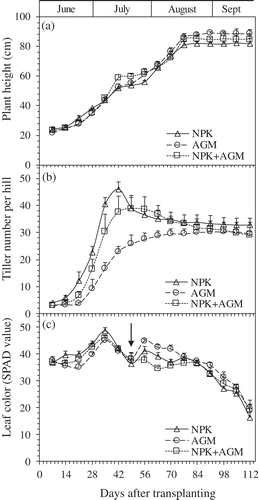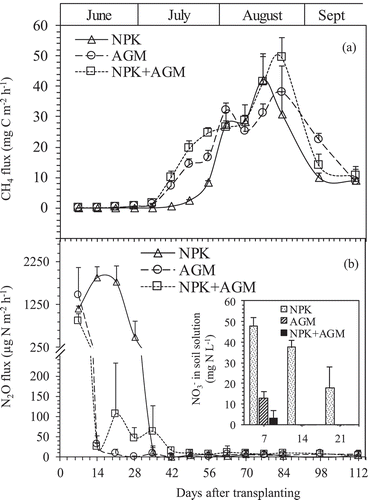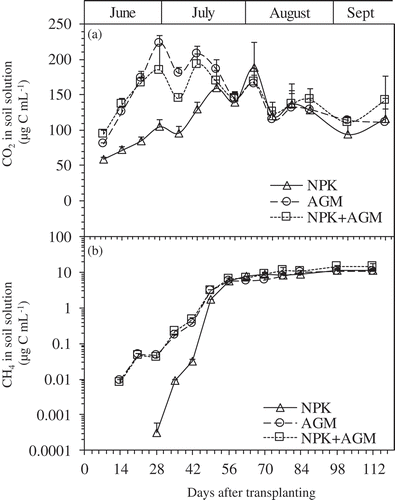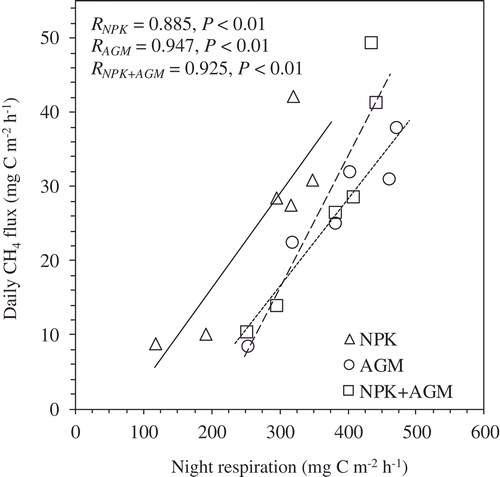Figures & data
Table 1. Major properties of experimental paddy soil.
Figure 1. Plant height (a), tiller number (b), and leaf color measured in SPAD values (c) of the rice plants in NPK, AGM, and NPK+AGM treatment groups throughout the experiment period. Bars indicate standard deviation (n = 4). The arrow indicates the day fertilizer was added to the pots.

Table 2. Total biomass, grain yield, harvest index, cumulative CH4 and N2O emissions during early (before 63 DAT) and late (after 63 DAT) rice growth stages, and total CH4 and N2O emissions per grain yield equivalent among three treatments.
Figure 2. Changes in CH4 (a) and N2O (b) fluxes from pots treated with NPK, AGM, and NPK+AGM throughout the experiment period. Bars indicate standard deviation (n = 4). Inset in (b) shows the concentration of NO3–N dissolved in the soil solution during the first 3 weeks on the day of gas sampling.

Figure 3. Changes in the concentration of CO2 (a) and CH4 (b) dissolved in the soil solutions in pots treated with NPK, AGM, and NPK+AGM throughout the experiment period. Bars indicate standard deviation (n = 4).

Table 3. The net CO2-equivalent greenhouse gas emissions balance from CH4 and N2O emissions (positive), and soil C sequestration (negative) among three treatments.
Figure 4. Relationship between daily CH4 flux and night respiration (CO2 emission) among NPK, AGM, and NPK+AGM treatments throughout after 9 weeks rice transplanting (n = 6).

